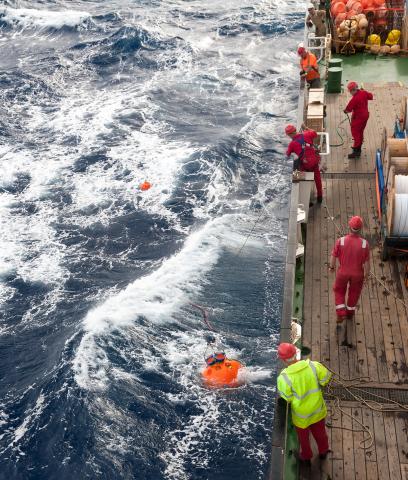
The AMOC, which plays an important role in the climate of northwest Europe, has been mostly stable through the last 12,000 years apart from a disputed weakening in the late 19th century.
Confidence: Medium evidence, Medium agreement
Overall weakening of AMOC through the instrumental period (since 1950) depends on proxy data and sparse measurements leading to low confidence in this trend.
Confidence: Low evidence, Low agreement
The AMOC underwent a strengthening in the 1990s, a weakening until the early 2010s, followed by a slight recovery, before a return to weakening in recent years.
Confidence: High evidence, High agreement
Freshwater fluxes from Arctic and Greenland sources have influenced the subpolar North Atlantic, and the enhanced release of freshwater could have an increasing impact on the AMOC in the future.
Confidence: Medium evidence, Medium agreement
Predictions of an AMOC weakening by 2100 are robust and consistent in magnitude with the observed trend in the AMOC since 2004 of 1 Sv/decade.
Confidence: Medium evidence, High agreement
There have been increased numbers of studies highlighting the risk of AMOC passing a tipping point in this century, but large uncertainty remains around the robustness of the metrics and data used to assess this.
Confidence: Low confidence, Low agreement
Future changes in shelf circulation are uncertain but will result from both local climate impacts and exchanges with the open ocean. Understanding these changes is important as they are likely to have a direct impact on fisheries and aquaculture, sediment transport, marine biodiversity and sea level.
Confidence: Low confidence, Low agreement
AMOC
- Reconciling AMOC reconstructions and climate simulations is a key challenge to underpin confidence in future projections.
- Focus of understanding circulation change should not be solely on AMOC with elements such as the subpolar gyre and its driving processes being key to emerging understanding.
- Additional freshwater from the Arctic and Greenland is concerning since its release could have major consequences for the stability of the AMOC.
- Projections consistently show a weakening of the AMOC in the future, but concern exists about whether current models could overlook the possibility of AMOC collapse.
- Further work is also required to understand the timescales for when impacts occur following an AMOC decline.
Shelf seas
- Features on the continental shelf often have shorter timescales and smaller spatial scales than the open ocean, which causes a challenge for their observation and simulation.
- Observations on the shelf need to be sustained and coordinated to validate model simulations and fill fundamental gaps in understanding.
- Projections of shelf sea circulation and exchange in future climates should be improved through model development as well as validation with observations.
Supporting decision making
- Ocean circulation is the key to predictability on decadal timescales and the leveraging of this skill offers the potential for policy-relevant timescales of forecasting.
- Climate and biogeographical impacts of ocean circulation change have been studied but the economic impacts of these changes are not well-understood.